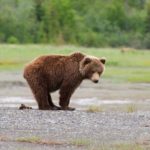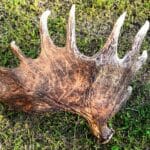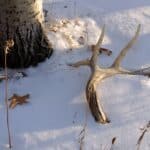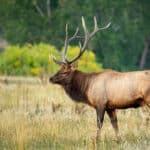If you like hunting big game then you’re most likely always looking for a new challenge. Or perhaps you’re seeking a different species to add some diversity to your hunting accomplishments. Learning how to hunt pronghorn could certainly scratch that itch and offer a tremendous adventure.
No other big game animal today portrays, nor is associated with, the wide-open spaces of our country’s western prairies and grasslands more than the American pronghorn antelope (Antilocapra americana).
Having pursued these animals myself and guided pronghorn hunts for many years, I compiled this guide to summarize what you need to know to get started.
Hunting Pronghorn, The Prairie Speedster
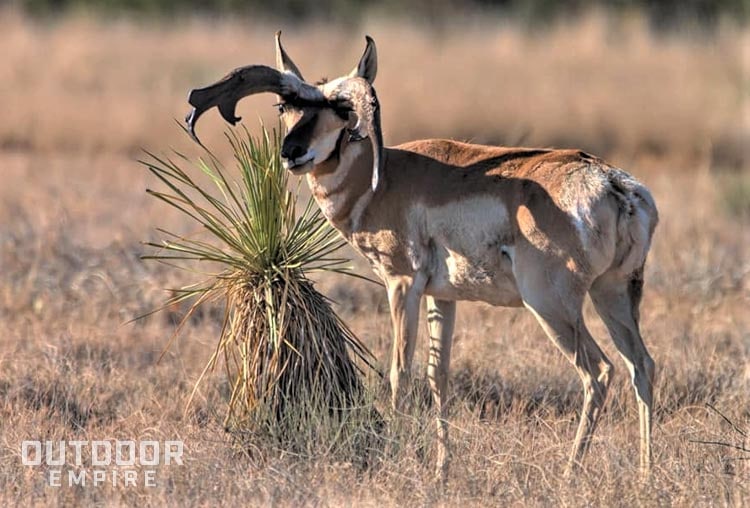
Despite popular belief, pronghorn are not actually antelope like the species found in Africa or Asia. Pronghorn are truly a unique North American species that use their incredible vision and speed to evade predators going all the way back to the Ice Age.
The pronghorn is the fastest land mammal in the western hemisphere. Top speeds can reach 55 mph with the pronghorn often being cited as the second-fastest land animal, second only to the African cheetah.
Horns and Appearance
Both males and females (bucks and does) can have horns. Bucks also have a distinctive black cheek and neck patch on both sides, while the does do not.
A female’s horns, if she has any, rarely exceed the length of her ears. Males shed their outer black sheath once a year leaving the boney inner core atop their head for a short time until the sheath supporting the prong grows back.
Pronghorns are the only ungulates (hoofed mammals) in the world that have horns and shed the outer sheath.
How to Identify a Trophy Buck
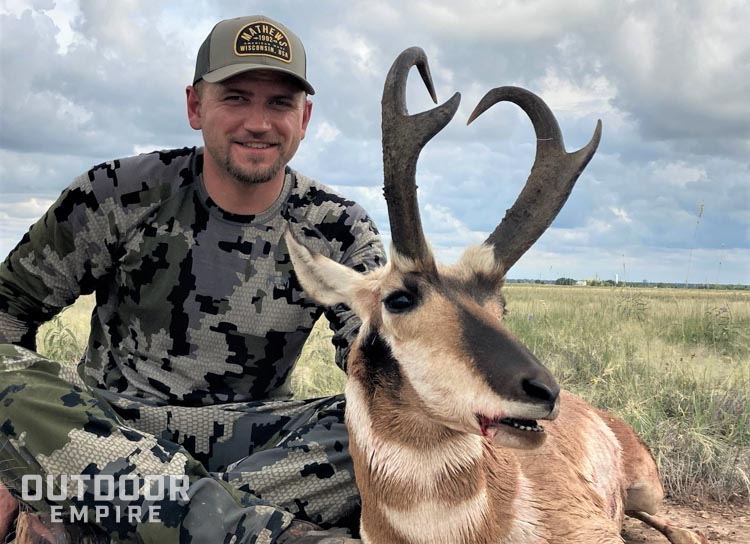
So, what factors do you look for to determine a good buck when it comes to trophy class horns?
Three things to consider:
- Horn length
- Prong length
- Circumference of the horn, or mass of the horn itself
From my experience, a buck with a horn length of 12 to 13 inches should be easily obtainable in most locations. That’s a good first pronghorn.
A 14-inch buck is beginning to be more interesting, while a 15 to 16-inch buck will be viewed as a trophy. With good prong length and some mass, a buck of that size could even make Boone & Crockett.
The longer the prongs, the better the buck will score. Trophy bucks will usually have prongs in the 3 inch and above category. If the prongs start above the ears, and the buck has good hooks on top, he is worth a very hard look.
A buck with 17 inches of horn length or greater is not common and, without a doubt, would be a trophy class animal.
States That Have Pronghorn Hunting
Huntable pronghorn populations exist in the following states:
- Wyoming
- New Mexico
- Montana
- Idaho
- Arizona
- Nevada
- Oregon
- Colorado
- Utah
- South Dakota
- Texas
Pronghorn numbers today are somewhere between half a million to one million animals scattered across western states. Wyoming is the top producer of pronghorn.
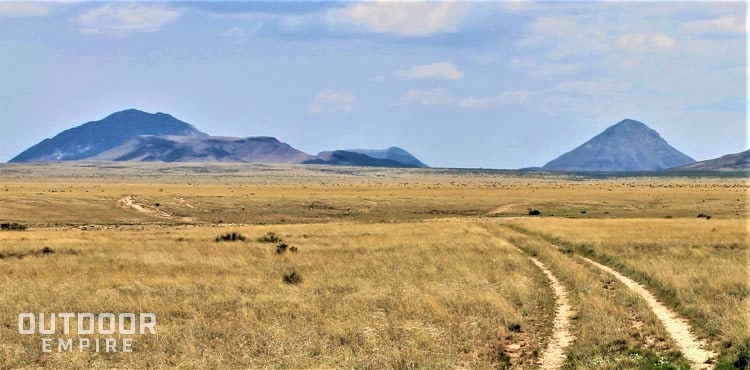
How to Hunt Pronghorn Antelope
Hunting styles are usually based around a spot and stalk approach.
Normally a good tactic is to be positioned on any elevated ridge or hilltop early in the morning with the sun at your back. Once the sun begins climbing any pronghorn to the west of your position will literally shine with the morning sun reflecting back off of them.
A good pair of binoculars and a spotting scope are a must-have, especially when trying to determine horn length. Some years, when there has been excellent grass growth, all I have spotted while glassing is the black horns of a buck sticking up above the grass while bedded.
Recommended: Best Binoculars for Hunting Deer, Elk & Other Game
If you don’t spot a buck that you like, keep moving and repeat the process until hopefully finding a buck that meets your criteria. Once you have pinpointed the buck you want to try for, a stalk may be in order. But be advised, pronghorn have excellent vision and they can run like the wind.
One interesting trait that these animals possess is that they are very curious. You may have heard of a hunter “flagging” a pronghorn to them. Although I have never taken a buck in this manner, I have concealed myself in tall grass and waved a cap or neckerchief when the animals were already watching me. They did in fact move closer to me out of curiosity, so I believe the tactic could be worth trying in a hunting situation.
Bowhunting Tips
If you are an archery hunter, you will most likely need to utilize a blind.
Some states have archery hunts beginning in late summer or early fall. Hotter temperatures mean water sources will be your best bet at getting within range for a bow shot, especially if set up with a ground blind.
Rifle Hunting Tips
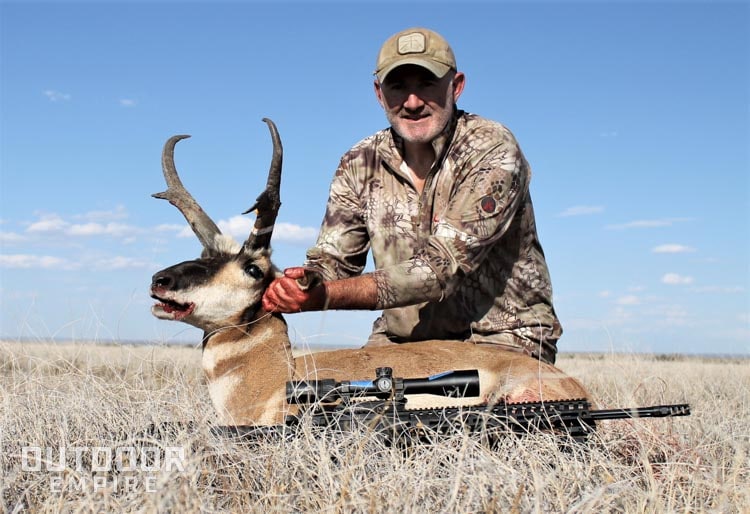
Any flat shooting rifle caliber is appropriate for hunting pronghorn. I have taken them with everything from a .243 Win, to .270 Win, to .30-06.
A .308 Winchester will also take down a pronghorn just fine, along with most big game animals in North America.
Recommended: Best .308 Rifles Reviewed
Pronghorn Hunting FAQs
1. What Time of Day Are Pronghorns Most Active?
Pronghorn generally live in open country, where tree cover is limited or non-existent, therefore it’s possible to hunt pronghorn throughout the day. It’s not necessary to start hiking or driving into your hunting area well before daylight.
2. How Hard Is It To Hunt Pronghorn?
Pronghorn are not considered tough to bring down, so any well-placed shot is usually adequate. Shots could be from less than 100 yards to as far as you can see considering the flatness of the terrain that pronghorn occupy.
Your ability and skill for longer shots rest on your shoulders. Be responsible and ethical, always striving for a clean kill.
3. How Is Pronghorn to Eat?
Like any wild game, pronghorn can range from just ok to excellent as table fare. Personally, I have the whole animal made into breakfast sausage and summer sausage which puts the meat in the excellent category in my book.
Final Thoughts
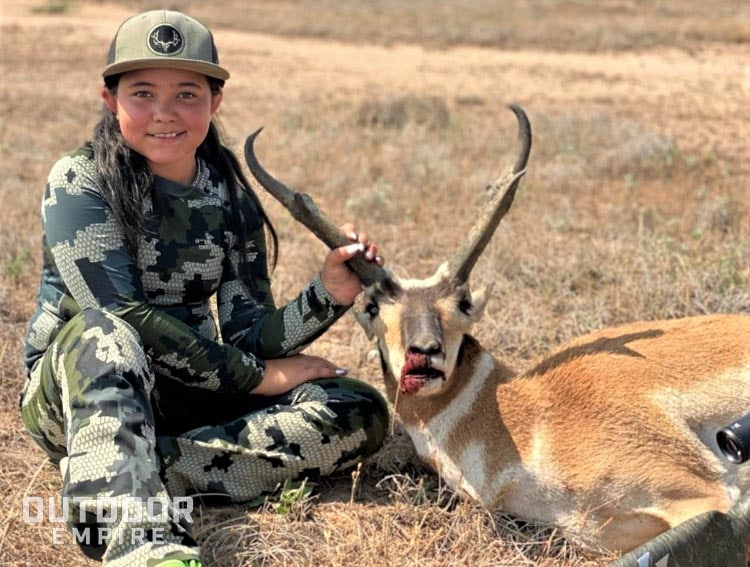
The American Pronghorn is well, truly American and no trophy room is complete without one in my estimation. Plenty of opportunities abound across many states for hunting the pronghorn. If you have never taken the time, maybe this next hunting season should include a pronghorn hunt in your crosshairs.
Photos by Terry Nelson, unless otherwise noted.


